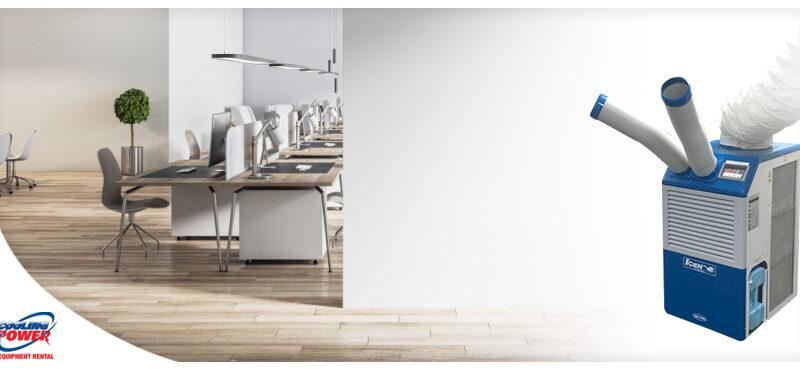Throughout the year, one of the most important assets for any office building, warehouse, or facility is an effective air conditioning system to keep temperatures at a comfortable level. In most cases, these systems are working around the clock all season long until Autumn finally arrives and temperatures begin to drop. Depending on where you live, you may be using traditional air cooling systems, a spot cooler, or a combination of both to get through the summer.
Whatever your needs are, having the right system will ensure your facilities are properly cooled and will help keep energy bills manageable. If you are unsure which system is best for your use case, here are some characteristics of traditional AC units and spot coolers to help you decide.
Standard AC
Traditional air conditioning units are also known as central air conditioning or HVACS. Rather than cooling a single room or area, they instead cool the air throughout an entire facility using a central compressor and condenser that delivers cool air through the network of vents and ducts. These systems are typically built into a facility during construction, making them a permanent fixture that is a core component in a facility’s overall heating, ventilation, and air conditioning or HVAC.
For office buildings, warehouses, and facilities that require even cooling throughout the entire structure, a central AC unit is the best solution for the hob, albeit at a rather costly initial investment. Central cooling is used in most households and is what most people are familiar with when it comes to cooling solutions.
Spot Coolers
Central cooling is a permanent fixture that is integrated during a facility’s construction. On the other hand, spot coolers are typically used in a temporary capacity but are no slouch in terms of what they can offer. In some cases, they can even serve as a long-term solution depending on the size of a facility or its cooling needs.
Spot coolers work by sucking air from their surroundings before sending it into a closed-loop coil that contains refrigerant. This process not only cools the air but also reduces the amount of humidity before pumping the cold air out the back and into the room. These systems are often used as a backup cooling system in case a central AC unit is undergoing maintenance, repair, or otherwise unable to work properly.
Which Should You Choose?
While both systems have their place, central air conditioning must be built into a facility during its initial construction or otherwise undergo renovation to add it. This may not be ideal if all you are looking for is temporary or extra cooling units to get through the hottest months of the year, and this is where spot coolers can save the day.
You can place spot coolers in any part of a facility that needs extra cooling, making them an ideal solution for pockets of activity and when not every inch of the building needs to be cooled to an even temperature.
Additionally, spot coolers can be a more cost-effective option, as they typically use less energy than central cooling, reducing your overall utility costs compared to central AC. This makes them ideal for industrial warehouses or construction sites. On the other hand, a hospital or office building that needs to maintain a constant temperature across the entire facility should stick with central cooling.
Rent a Spot Cooler
If you are seeking a temporary solution to add extra cooling power to your existing central AC unit or to get through the hottest months of the year, renting a spot cooler can be a cost-effective way of dealing with the heat. Cooling Power Corp offers rental services for a variety of cooling equipment, including spot coolers, and can be your solution for getting through the summer. To get your quote, contact our amazing team today!

